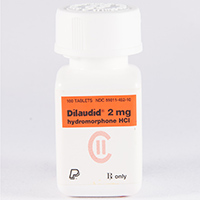Hydromorphone
Hydromorphone is a potent opioid analgesic used primarily for the treatment of moderate to severe pain. Known commercially under names like Dilaudid, it is prescribed to patients with chronic pain, post-surgical pain, or cancer-related pain who require strong relief. Hydromorphone works by binding to opioid receptors in the brain and spinal cord, blocking pain signals and producing analgesic effects.
Medical Uses of Hydromorphone
Hydromorphone is prescribed for:
-
Relief from severe acute pain (post-surgery or trauma)
-
Management of chronic pain conditions
-
Pain control for cancer patients
-
Cases where other pain medications, such as morphine, are insufficient
These therapeutic uses make it a commonly researched strong prescription opioid in both the USA and UK.
How Hydromorphone Works
Hydromorphone binds to mu-opioid receptors in the central nervous system. This reduces the perception of pain and increases tolerance to discomfort. Effects typically include:
-
Significant pain relief
-
Sedation and relaxation
-
Euphoria in some patients, which contributes to misuse risk
Potential Risks and Side Effects
Although highly effective, Hydromorphone carries significant risks:
-
Respiratory depression (can be life-threatening at high doses)
-
Nausea, vomiting, constipation
-
Drowsiness and dizziness
-
Dependence and addiction with long-term use
-
Overdose risk, especially if combined with alcohol or other CNS depressants
Hydromorphone Dosage and Administration
Hydromorphone is available in oral tablets, liquid solutions, and injectable forms. Dosage depends on:
-
Severity of pain
-
Patient opioid tolerance
-
Age and general health condition
Hydromorphone is a powerful prescription opioid with critical applications in pain management. While highly effective, it carries significant risks including dependency, overdose, and side effects. Understanding its proper use, effects, and legal status in the USA and UK is essential for patients, healthcare providers, and students.


Reviews
There are no reviews yet.